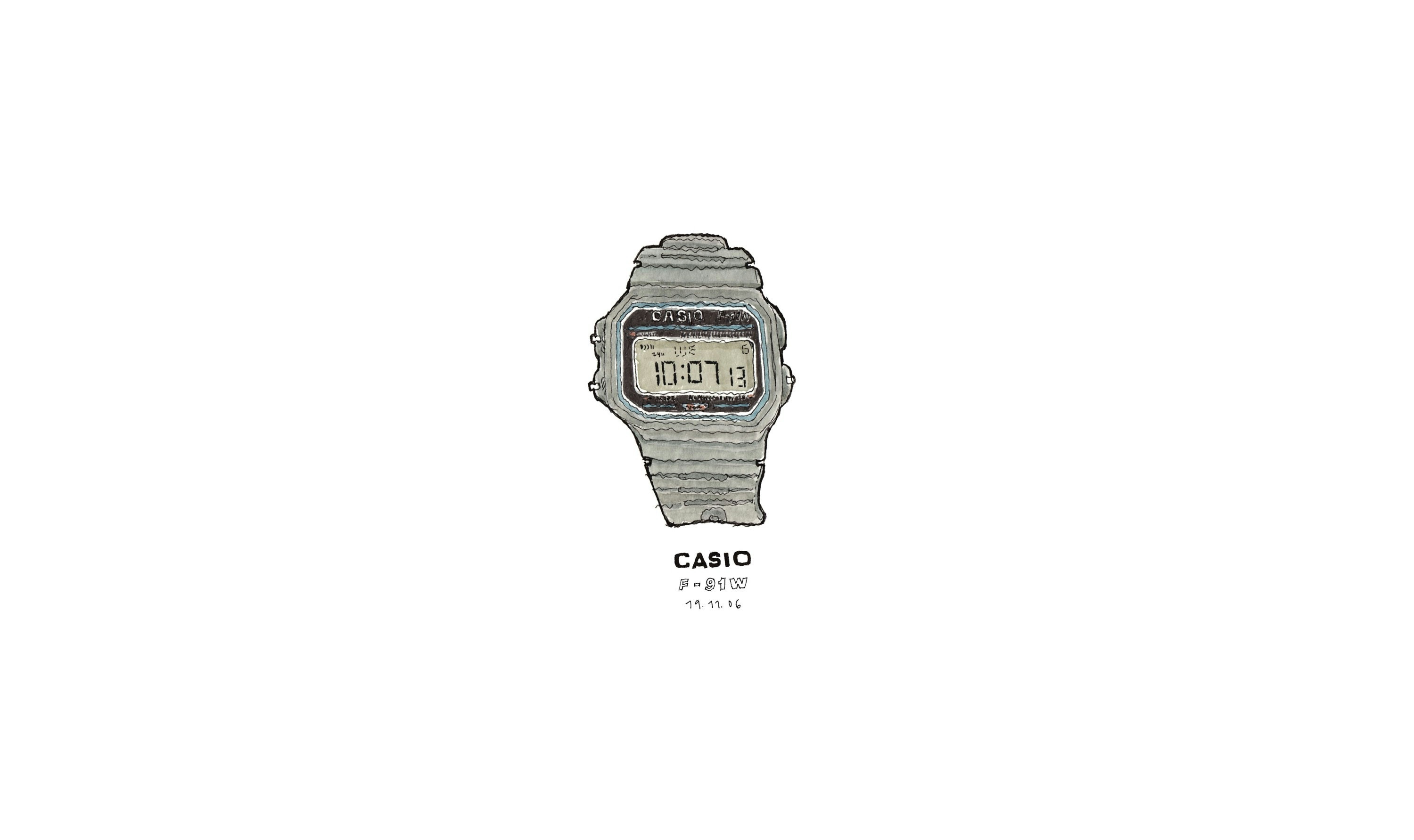
What's the Time?
By about 3000 BC the Egyptians had already developed a calendar, and a water clock, the sand clock predecesor, was already in use around 1500 BC, probably to time guard duty watches, travel time, or other cultural events.1
Today, time is ubiquitous and highly synchronized throughout the world, and the instruments we use to measure, keep, and indicate time have evolved a lot.2
We hang clocks in our walls and wear watches in our wrists and, with the appearance of digital devices, time turned into one more feature in our displays. We hardly ask each other the time anymore, as we simply reach into our pockets and tap our phone screen or look at the corner of our computer monitor.
I still keep the watches I wore when I was a child as some sort of memory tokens; a blue and yellow Flik Flak, a Casio F-91W, and an infra-red remote control capable of learning new commands, the Casio CMD-40.
With my first Nokia phone, I somehow stopped wearing watches. In 2008, I got my first iPod touch and, in 2015, my first and only smartphone so far, an iPhone 6. I remember being happy about not having to rely on a hand watch to check the time. But these smart devices are capable of doing so much more than just check the time and, as it turns out, we end up heavily relying on them. A simple time check can turn into a sudden exposure to notifications prompting you to reply a message, watch a dumb meme, or simply reminding you of your next commitment. Useful but often distracting interactions.
This is why, a few months ago, I decided to go back to wearing the classic Japanese watch I used to wear as a kid—the Casio F-91W—to avoid relying so much on my iPhone to check the time, set my morning alarm, or use a stopwatch.
I could buy it on Amazon for 10,60 euros and have it on my hands in just a few days. A surprisingly cheap, comfortable, and lazy purchase that makes me undermine its monetary value.
Why am I telling you this? Because this unitasker has probably saved me hundreds or thousands of phone pickups, and lots of time-sinking moments mindlessly using my phone.
In an era of multitasking smartphones, purposefully relying on unitasking devices—that can only do one thing, really well—can help you better focus on whatever it is you want to do.
For instance, writing on a physical notebook or drawing on a sketchbook (instead of using one more app) are easy ways to escape the digital world to focus on the task at stake.
If you want to be more present, maybe finding the answer to What's the time? or being able to sketch or note something down outside of your smartphone may be a good strategy.
R.T Balmer, The invention of the sand clock, Endeavour, Volume 3, Issue 3, 1979, Pages 118-122, ISSN 0160-9327. ↩